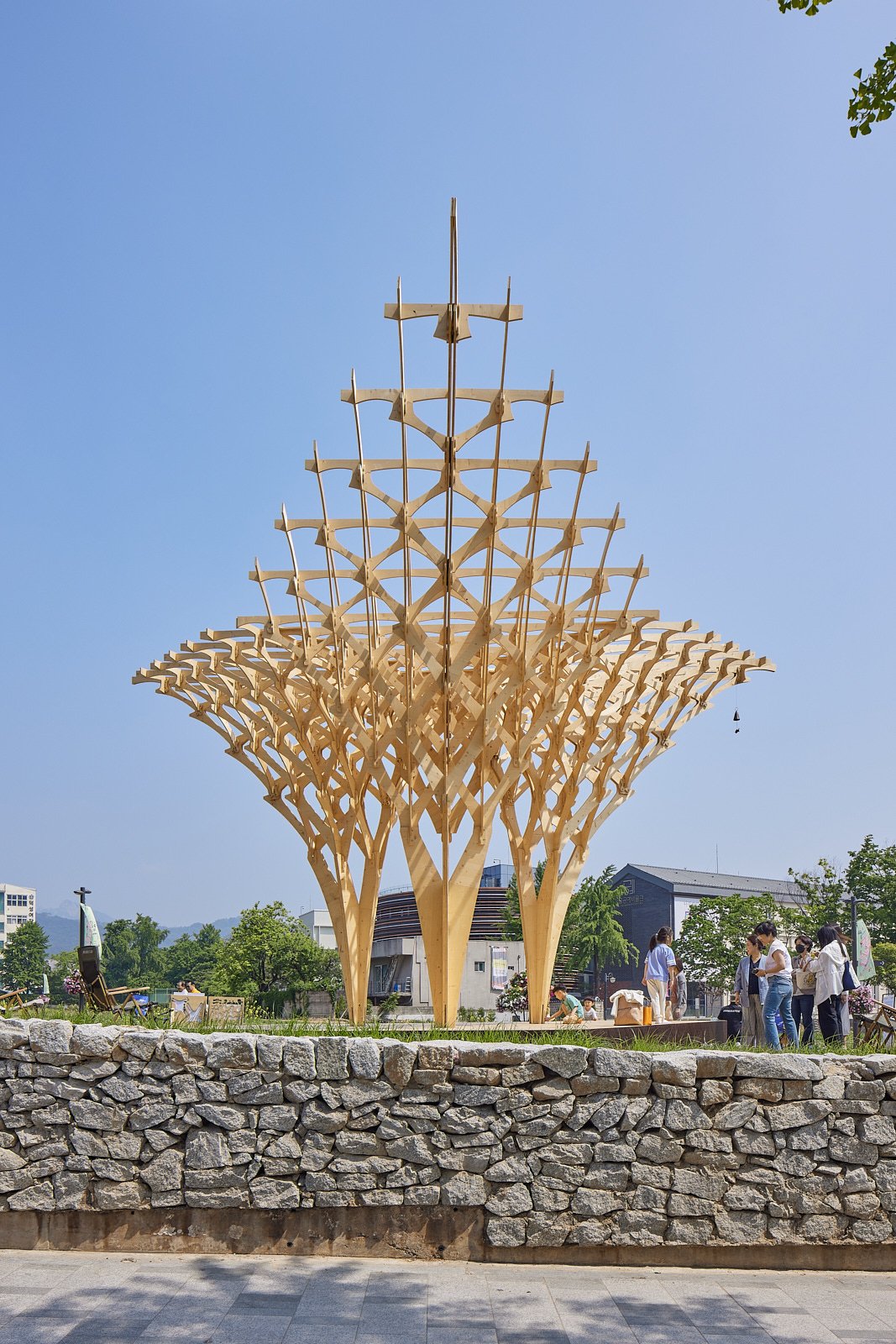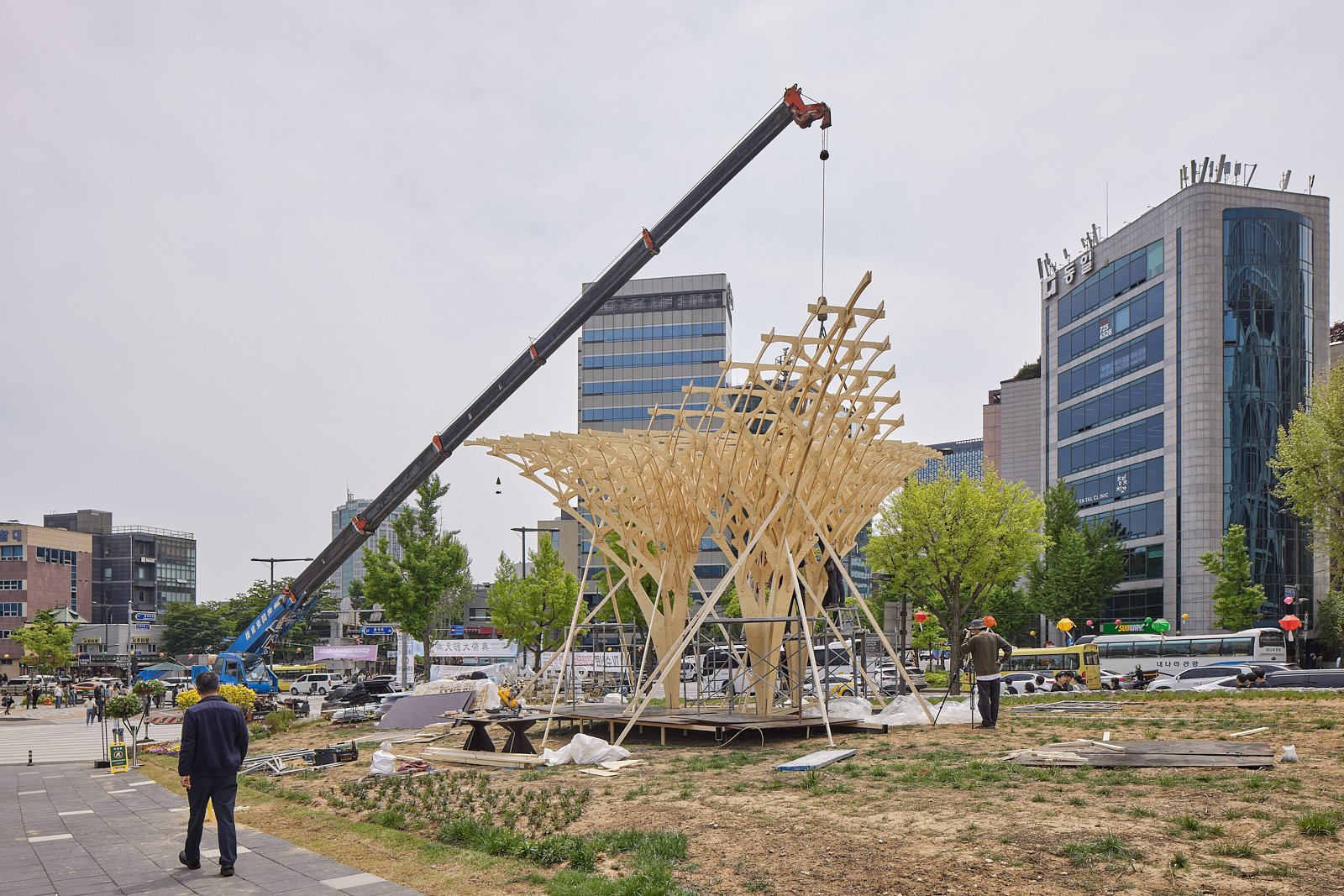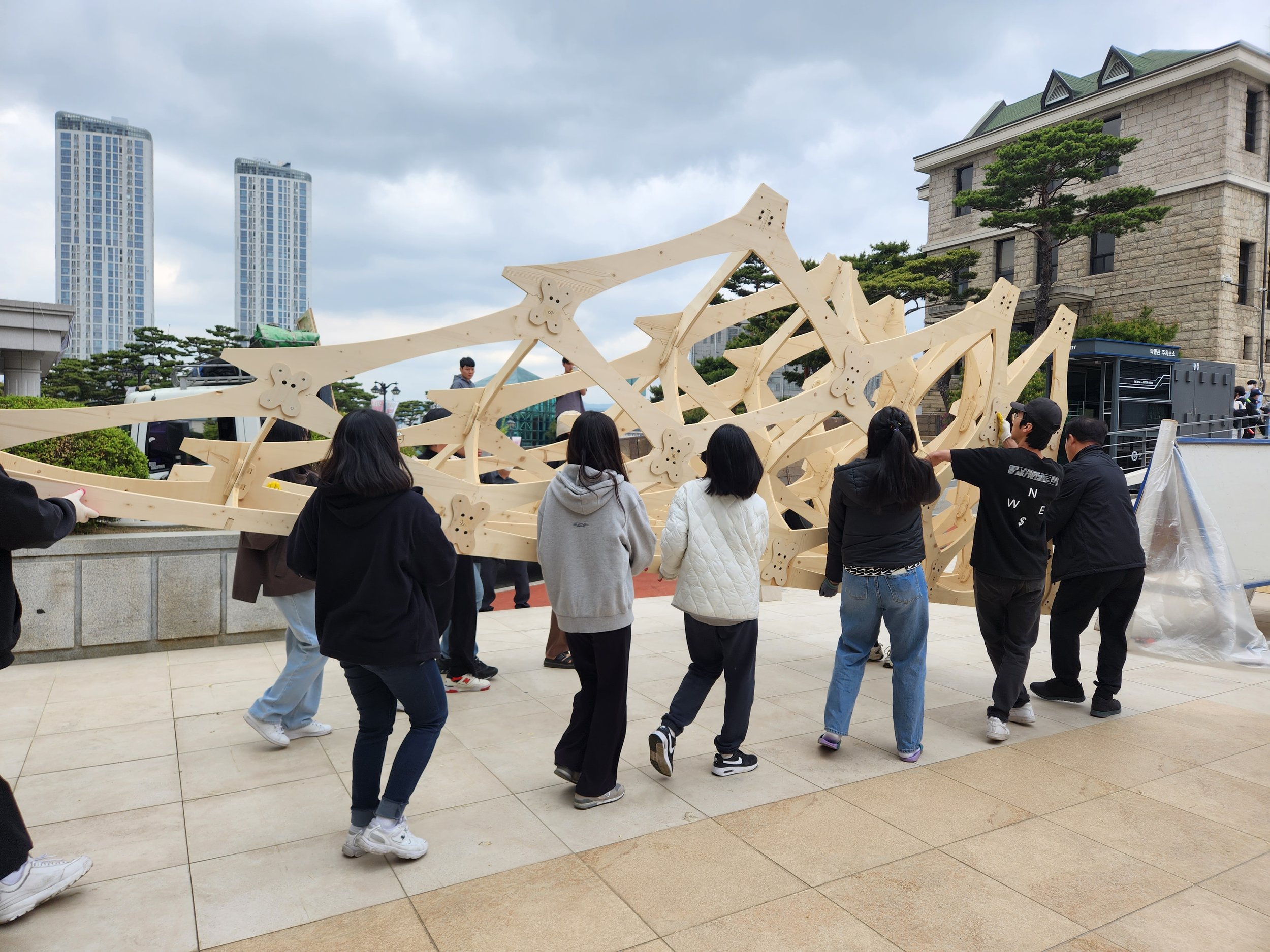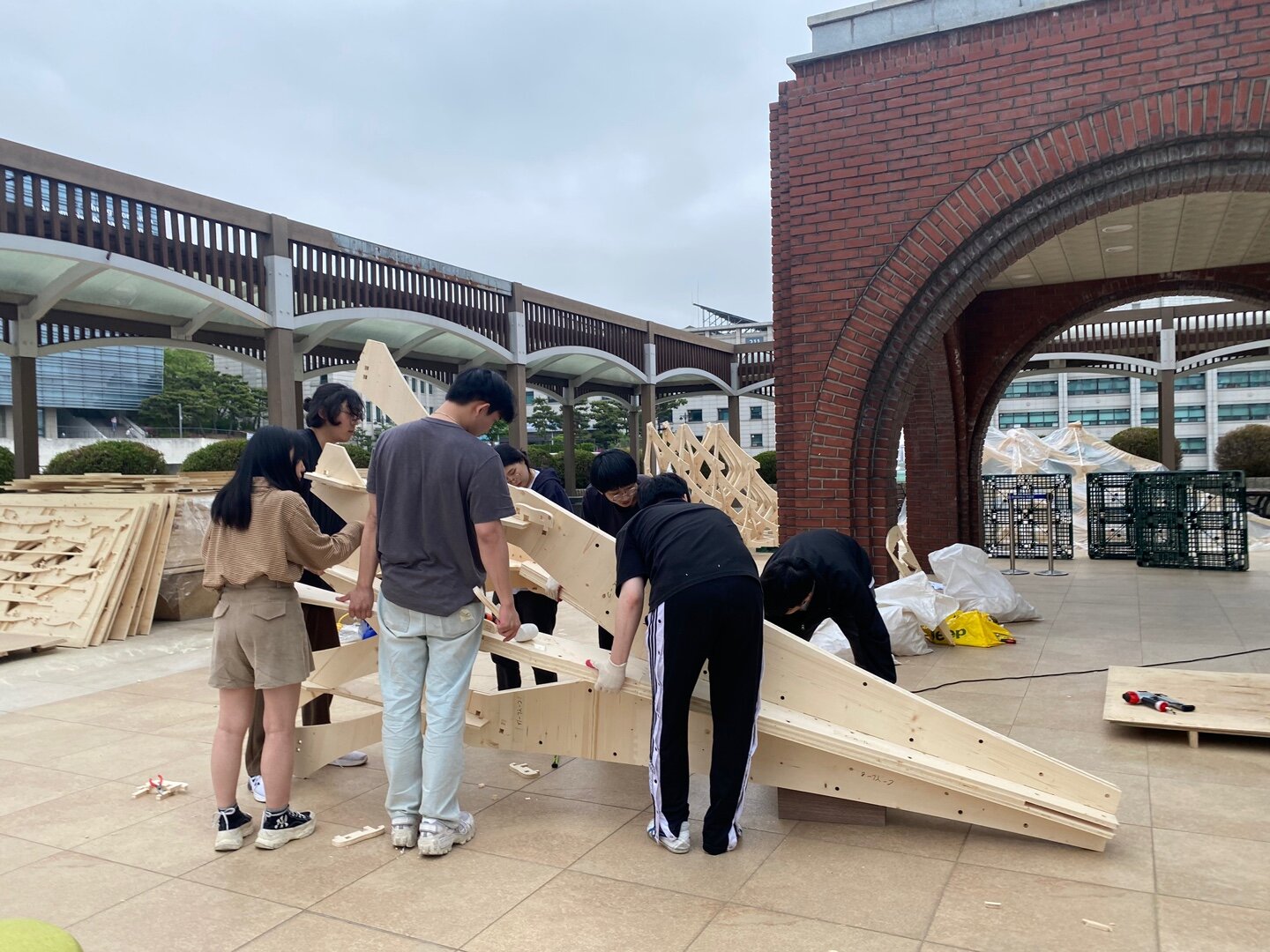Pavilion of Contemplation
The Pavilion of Contemplation emerges from a design experiment that explores the traditional wooden bracket system of East Asian timber buildings, both in its structural and aesthetic aspects. This exploration also fosters the creation of a new type of Asian pavilion, a "jeong," characterized by its harmonious integration with the natural environment.
In practice, the Pavilion serves as a shelter for Songhyeon Park, nestled near the venerable Gyeongbokgung Palace, and as a temporary stage for dance and music performances. However, its open-ended design invites a multitude of interpretations. To some, it might evoke a contemporary reimagining of the Asian pavilion, while others might see echoes of vernacular architecture from Southeast Asia or Africa. Still others might perceive it as an artificial tree, a small urban forest supported by its three tree-like pillars.
In this way, the Pavilion of Contemplation responds to our modern desire for architecture that embodies diverse values and experiences. Yet, it doesn't lose sight of the fundamental purpose of architecture: to provide a place of rest and refuge for the human body and mind. Perhaps, then, this pavilion can also be seen as a reimagining of the primal hut, a reminder of architecture's core essence in a world often rushing past its very walls.
Construction Participation of Students and Alumni
























